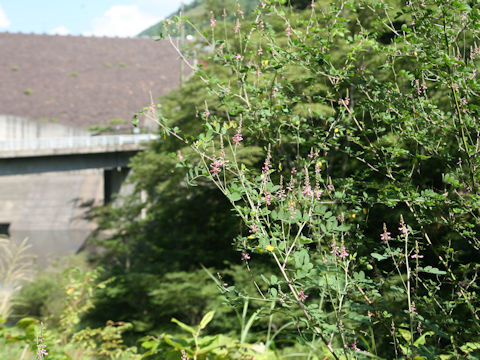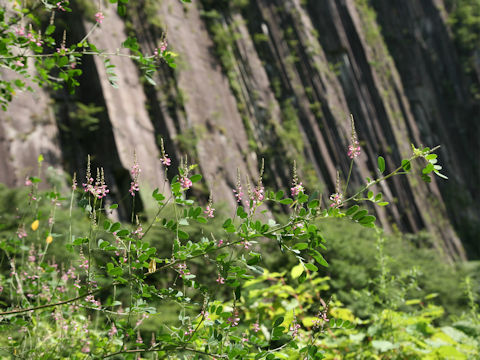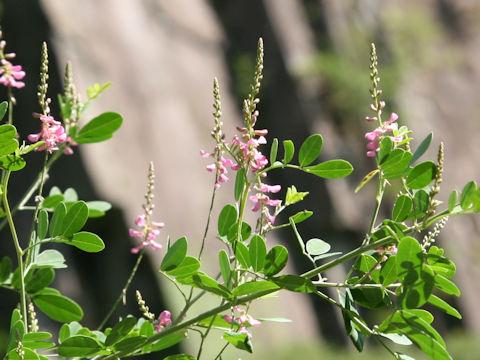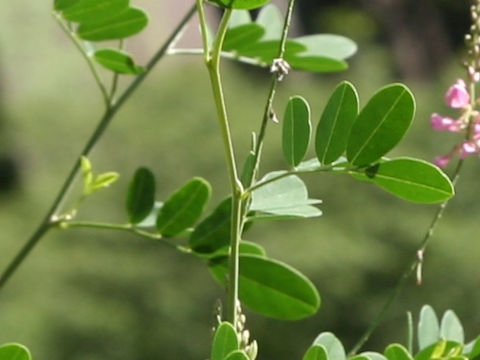 |








|

|
中国が原産です。今では台湾にも帰化しています。高さは2〜4メートル、幹の直径は3〜4センチにもなります。葉は奇数羽状複葉で、長楕円形の小葉が7〜13個つきます。5月から9月ごろ、葉腋に長さ4〜10センチの円錐花序をだし、淡紅紫色の蝶形花を咲かせます。果実は円筒形の豆果です。わが国では、中国などから導入され、道路法面の緑化や崖崩れ防止に使用されています。別名で「きだちこまつなぎ(木立駒繋)」とも呼ばれます。中国語では「河北木藍(he bei mu lan)」です。「こまつなぎ(駒繋ぎ)」と同種とする見解もあります。
|

|
マメ科コマツナギ属の落葉低木で、学名は Indigofera bungeana。英名はありません。
|

|
The He bei mu lan (Indigofera bungeana) belongs to Fabaceae (the Pea family). It is a small deciduous tree that is native to China. It has now naturalized in Taiwan. It is 2 to 4 m tall, with a trunk 3 to 4 cm in diameter. It has odd pinnate compound leaves with 7 to 13 oblong leaflets. 4 to 10 cm long panicles of pale reddish purple papillionaceous flowers bloom in the leaf axils from May to September. The fruit is a cylindrical pea pod. In Japan, it was introduced from China and other countries and is used for greening road slopes and preventing cliff collapses. It is also known as "Kidachi-koma-tsunagi" in Japan. In Chinese, it is called "河北木藍" (he bei mu lan). Some consider it to be the same species as "koma-tsunagi" (Indigofera pseudo-tinctoria).
|

|
宮城県白石市「材木岩公園」にて、2023年08月17日撮影。
|



